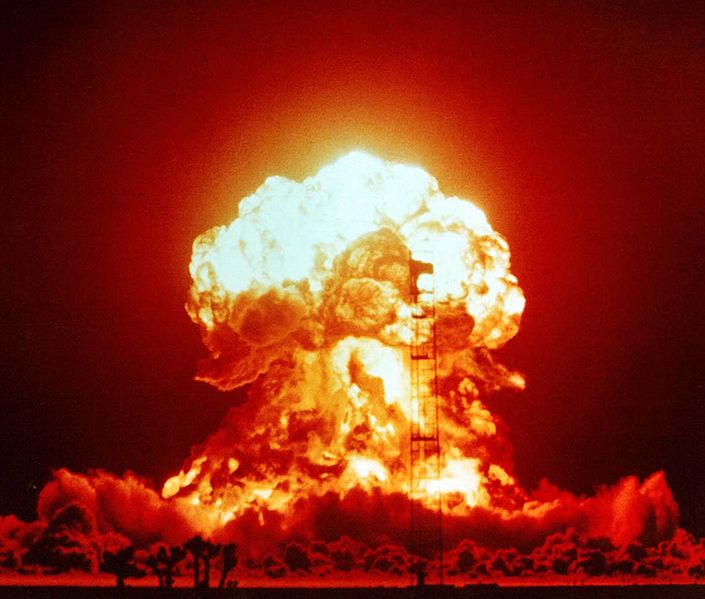Recommendations from the Three Mile Island Recovery Team on how the best ways to increase your chances of surviving deadly radioactive nuclear fallout.
Mac Slavo
March 2nd, 2012

Ms. Thompson contacted us recently to advise us that she and the surviving members of her team have created an easy to follow info-graphic and checklist that can help you to survive a nuclear disaster should you ever be faced with the same emergency as those people living around Three Mile Island.
While often ignored by most Americans, even on the heels of the ongoing Fukushima nuclear meltdown, the potential for nuclear disasters today is clearly more of a threat than ever before. Despite assurances from reactor manufacturers and plant operators, we’ve seen numerous disasters over the course of the last three decades, and we can be fairly certain that we will have another one in the future.
If you live anywhere on the east or west coasts, chances are you are close to an existing reactor.
According to the infographic below, one in three Americans live within 50 miles of a nuclear reactor, and by all accounts, as demonstrated by Fukushima, in the event of disaster this could very well be the ’kill radius.’
Thus, we urge all of our readers to explore the below graphic, as well as the ‘weapons’ and checklist that follow.
Additionally, if you are ever in an area that has experienced any type of nuclear emergency (be it a reactor meltdown, dirty bomb attack, etc.) we strongly recommend that you evacuate first and ask questions later, because as we saw with Three Mile Island, “everything” is not always under control.
Don’t wait for the experts on TV to tell you it’s time to go. Just grab your bug out bags, GOOD manuals and go!
How To Survive A Nuclear Holocaust
Last year, nuclear meltdowns and multiple explosions at the Fukushima Daiichi reactor complex sent plumes of radioactive contaminants across the northern Japanese countryside. These contaminants were projected in the atmosphere putting the northern hemisphere in danger of hazardous isotopes.
The events at Fukushima brought into focus the very real danger of a nuclear holocaust. At Best Health Degrees we decided to put together this infographic detailing some practical steps you can take to survive the danger posed by harmful nuclear radiation.
The Key: to surviving a nuclear holocaust is minimizing exposure to internal and external radiation. You will need some “weapons” to help in this effort.
The Weapons
- Duct Tape
- Mop
- Water filtered vacuum
- Sponge
- Paper towels
- Plastic bags
- Sutrdy trash container
- Hand-held radiation detector
Survival Checklist
- Think of nuclear radiation as an invisible layer of dust on all surfaces that needs to be carefully cleaned away and managed
- Create an air tight seal in your home (duct tape comes in handy)
- Aggressively clean off surfaces in your home without creating dust (wet wipes and water filtered vacuums)
- Keep food in clean, sealed containers
- Clean floor and furniture with water filtered vacuum
- When you go outside, wear a set of coveralls or a duster over your clothes.
- Shower every time you come indoors from having spent more than a few minutes outdoors.
- Use good quality dust masks to cover your mouth and nose, especially when going outdoors
- Launder sheets, handkerchief masks, outdoor clothing, at least once a day
- Keep all windows closed even if it’s nice outside) and sealed with duct tape
- Seal all doors that open to the outside with duct tape.
- Carry young children while outdoors or going to and from a vehicle.
- Keep pets indoors as much as possible for the duration.
- Sleep at least two feet above the floor
- Keep pots, pans, plates, silverware and utensils in clean cabinets
- Rinse your cooking utensils, plates, silverware, glassware
- Rinse the outside of all food cans before opening
- Do not do anything that can stir up dust (don’t use duster or a normal vacuum)
Special thanks to Joy Thompson.
Hat tip Ryan
Also see:
Survive Anything: Nuclear Attack
The Number One Catastrophic Event That Americans Worry About
US Nuclear Emergency Response Plan: “Get On The Phone Really Quickly and Figure it Out”
The Effects of Nuclear Weapons, Primary U.S. Targets, and Nuke Detonation Mapping
From The Ready Store: IOSAT – Radiation Protection Tablets

